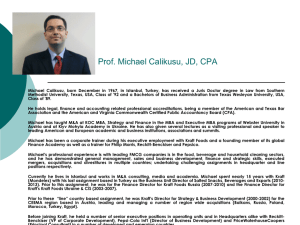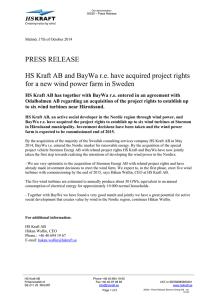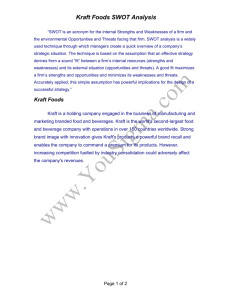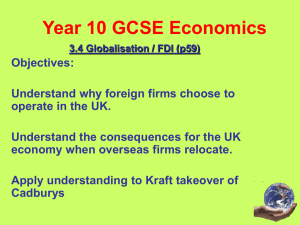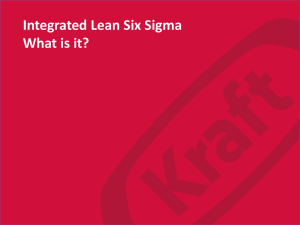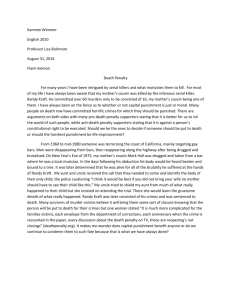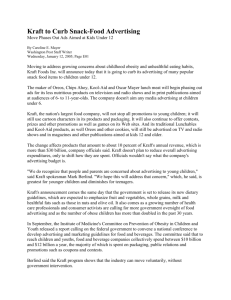The leadership corridor
advertisement
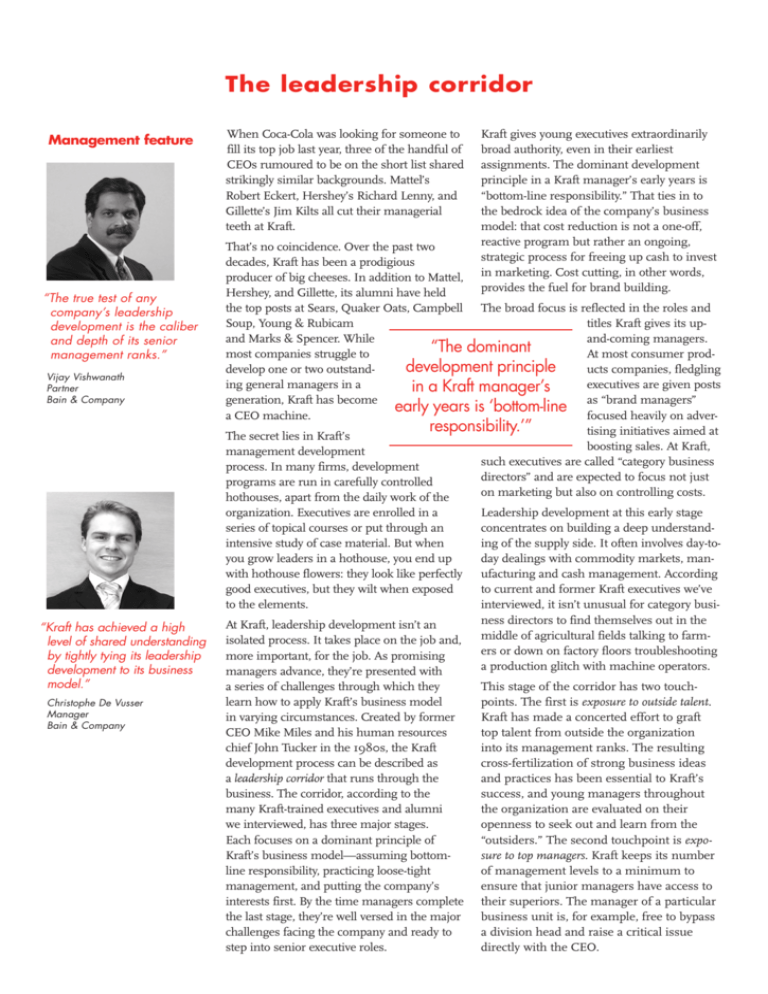
The leadership corridor Management feature “The true test of any company’s leadership development is the caliber and depth of its senior management ranks.” Vijay Vishwanath Partner Bain & Company When Coca-Cola was looking for someone to fill its top job last year, three of the handful of CEOs rumoured to be on the short list shared strikingly similar backgrounds. Mattel’s Robert Eckert, Hershey’s Richard Lenny, and Gillette’s Jim Kilts all cut their managerial teeth at Kraft. That’s no coincidence. Over the past two decades, Kraft has been a prodigious producer of big cheeses. In addition to Mattel, Hershey, and Gillette, its alumni have held the top posts at Sears, Quaker Oats, Campbell The broad focus is reflected in the roles and Soup, Young & Rubicam titles Kraft gives its upand Marks & Spencer. While and-coming managers. “The dominant most companies struggle to At most consumer proddevelopment principle develop one or two outstanducts companies, fledgling ing general managers in a executives are given posts in a Kraft manager’s generation, Kraft has become “brand managers” early years is ‘bottom-line as a CEO machine. focused heavily on adverresponsibility.’” tising initiatives aimed at The secret lies in Kraft’s boosting sales. At Kraft, management development such executives are called “category business process. In many firms, development directors” and are expected to focus not just programs are run in carefully controlled on marketing but also on controlling costs. hothouses, apart from the daily work of the organization. Executives are enrolled in a series of topical courses or put through an intensive study of case material. But when you grow leaders in a hothouse, you end up with hothouse flowers: they look like perfectly good executives, but they wilt when exposed to the elements. “Kraft has achieved a high level of shared understanding by tightly tying its leadership development to its business model.” Christophe De Vusser Manager Bain & Company Kraft gives young executives extraordinarily broad authority, even in their earliest assignments. The dominant development principle in a Kraft manager’s early years is “bottom-line responsibility.” That ties in to the bedrock idea of the company’s business model: that cost reduction is not a one-off, reactive program but rather an ongoing, strategic process for freeing up cash to invest in marketing. Cost cutting, in other words, provides the fuel for brand building. At Kraft, leadership development isn’t an isolated process. It takes place on the job and, more important, for the job. As promising managers advance, they’re presented with a series of challenges through which they learn how to apply Kraft’s business model in varying circumstances. Created by former CEO Mike Miles and his human resources chief John Tucker in the 1980s, the Kraft development process can be described as a leadership corridor that runs through the business. The corridor, according to the many Kraft-trained executives and alumni we interviewed, has three major stages. Each focuses on a dominant principle of Kraft’s business model—assuming bottomline responsibility, practicing loose-tight management, and putting the company’s interests first. By the time managers complete the last stage, they’re well versed in the major challenges facing the company and ready to step into senior executive roles. Leadership development at this early stage concentrates on building a deep understanding of the supply side. It often involves day-today dealings with commodity markets, manufacturing and cash management. According to current and former Kraft executives we’ve interviewed, it isn’t unusual for category business directors to find themselves out in the middle of agricultural fields talking to farmers or down on factory floors troubleshooting a production glitch with machine operators. This stage of the corridor has two touchpoints. The first is exposure to outside talent. Kraft has made a concerted effort to graft top talent from outside the organization into its management ranks. The resulting cross-fertilization of strong business ideas and practices has been essential to Kraft’s success, and young managers throughout the organization are evaluated on their openness to seek out and learn from the “outsiders.” The second touchpoint is exposure to top managers. Kraft keeps its number of management levels to a minimum to ensure that junior managers have access to their superiors. The manager of a particular business unit is, for example, free to bypass a division head and raise a critical issue directly with the CEO. Creative dissatisfaction Movement around the matrix Exposure to outside talent Bottomline responsibility Loosetight management Figure 1: Kraft’s leadership corridor Company before individuals Up or... into the right hole Influencing & learning from staff functions Exposure to top managers Once young managers have developed a broad view of the business, Kraft lets them take action. The dominant principle at this phase is “loose-tight management.” The company imposes tough financial objectives, but it gives managers enormous leeway in figuring out how to hit the targets. Former Kraft CFO Gary Coughlan says that the approach reduces bureaucracy and encourages personal initiative. “If you did the job right, you didn’t have to write a lot of memos,” he recalls. “Once you showed your competence, you were left alone, and you were then able to develop your own style.” But Kraft managers don’t stay put for long. Another of the company’s development principles is to move executives quickly through line and staff posts. Former co-CEO Betsy Holden told us that Kraft’s top executives have more than 20 years’ experience with the company on average, yet have typically been in their current roles only about two years. The unusual career path taken by Ed Smeds is typical. A staffer who started in Human Resources, Smeds became CFO for Kraft and then made a jump over to the line, as general manager for Australia and then Canada. Before retiring, he moved back to the staff side to run purchasing and logistics. Mid-career managers are also encouraged to focus on influencing and learning from staff functions. Kraft line managers recognize that the expertise of the operational staff is critical to their success. The operational staff doesn’t report to the line managers, so interactions between the two are based on influence rather than authority. Management development at Kraft is nothing like the kind of succession planning that hinges on identifying and nurturing “leadership personalities”. The company inculcates leadership not as a personality cult but as an ingrained habit of putting the company’s interests first and helping colleagues succeed. Recalls Bob Morrison, a Kraft alum who went on to head Quaker Oats, “We weren’t hot dogs. We just tried to do things a little better every day.” Making it to the end of the corridor requires an attitude that goes beyond welcoming challenge to actually seeking it out. Call it creative dissatisfaction. Senior executives at Kraft are expected to constantly look for ways to improve the company’s products and processes. Can other companies follow Kraft’s lead? Yes and no. Management development at Kraft is tailored to the company’s business strategy, so it would be a mistake to try to replicate it blindly. What’s right for Kraft is unlikely to be right for another company. But it is possible to adopt the basic approach. Any company can think carefully about its strategy and the principles underpinning it. Any company can chart a career course for managers that reinforces those principles. And any company can give its young executives the responsibility to think and act like well-rounded chief executives. “The company gives managers enormous leeway in figuring out how to hit targets.”
